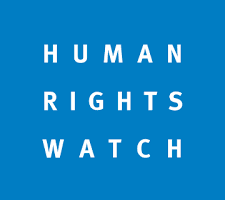The Committee to Protect Journalists on Thursday launched three new safety videos providing practical guidance to journalists covering unrest worldwide. Drawing on the organization’s expertise in emergency protection and safety, the videos will help journalists mitigate risk when covering protests and demonstrations.
Reporting on civil unrest continues to be a considerable safety risk for journalists globally. Produced by ENP Media in collaboration with CPJ’s Emergencies team, the videos highlight common safety issues that journalists face when covering protests and provide advice on situations the press should consider when reporting in the field. Over the preceding months, CPJ has responded to the needs of journalists covering protests in Brazil, Peru, Israel, and Iran, emphasizing the urgent need to disseminate tangible safety guidance to journalists covering unrest.
In 2022, CPJ’s Emergencies team recorded a 24% rise from the previous year in requests from journalists for safety workshops and financial support, demonstrating the increased need for comprehensive safety training for journalists.
“Every day, journalists around the world place their lives on the line while covering events of public interest, including mass demonstrations and protests,” said CPJ Emergencies Director Lucy Westcott. “CPJ has seen a dramatic uptick in requests for assistance from journalists, underscoring the importance of equipping the press with tools to safely do their jobs.”
The safety videos provide the following guidance:
- Preparing for a demonstration: With the right preparation and mindset, journalists can increase their safety when covering a protest or crowd event. This CPJ Emergencies video provides tips for journalists on safety issues to consider, and how best to prepare for these types of assignments.
- When demonstrations escalate: Peaceful protests can turn violent and create a dangerous environment for journalists. This video from CPJ Emergencies provides guidance for journalists on what to do when the situation turns dangerous, how to use de-escalation techniques, and how best to regroup safely from a crowded event.
- Teargas: Authorities across the world frequently deploy less-lethal weapons to try and slow or stop demonstrators, particularly if a situation is escalating. This video from CPJ Emergencies outlines best practices for journalists who are working in an environment where teargas may be used, and what steps to take if they are exposed.
CPJ’s Emergencies team has previously published safety resources in multiple languages for journalists covering protests, including guidance on personal protective equipment; covering civil disorder; how to prepare for, and deal with, arrest and detention; and a risk assessment template.
In addition to widespread protests, journalists globally are encountering increased risk while covering events such as elections, in addition to facing attacks in retaliation for their reporting on crime, corruption, and the environment. Earlier this year, CPJ reported that the number of journalists killed worldwide increased sharply in 2022, with 67 journalists and media workers killed worldwide. The global total was the highest number killed since 2018 and a nearly 50% increase from 2021, demonstrating the urgent importance of addressing the safety of journalists globally.
Learn more about CPJ Emergencies and its safety resources for journalists here.







Comments